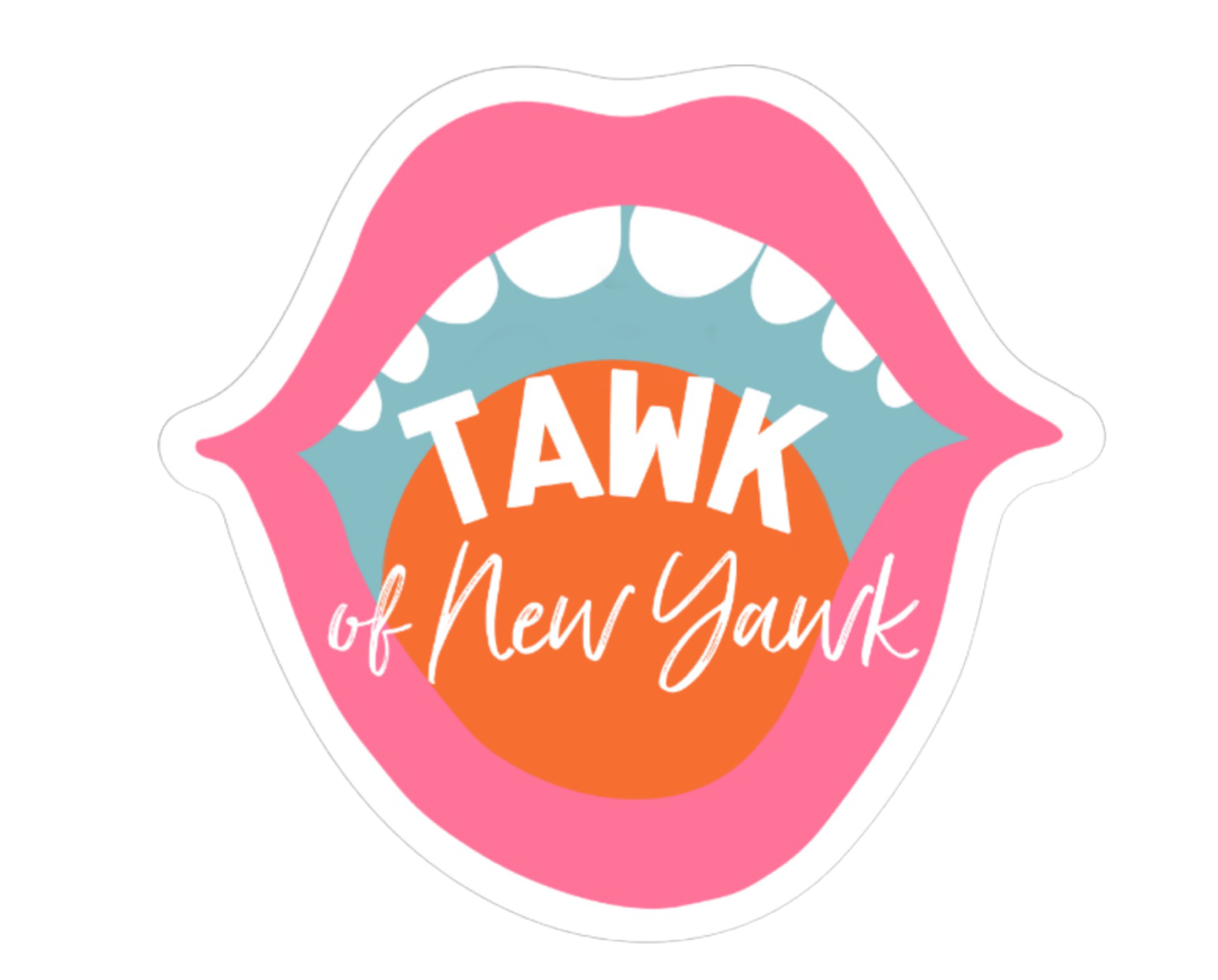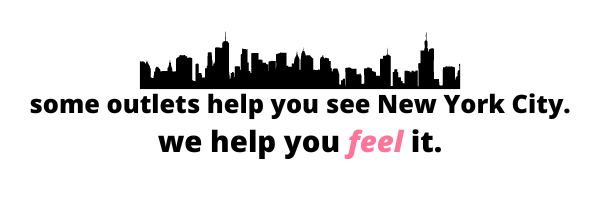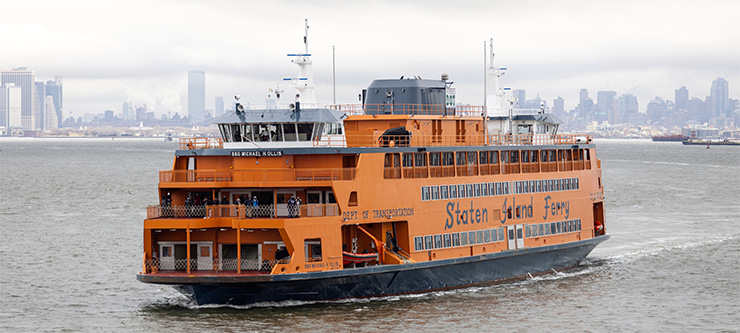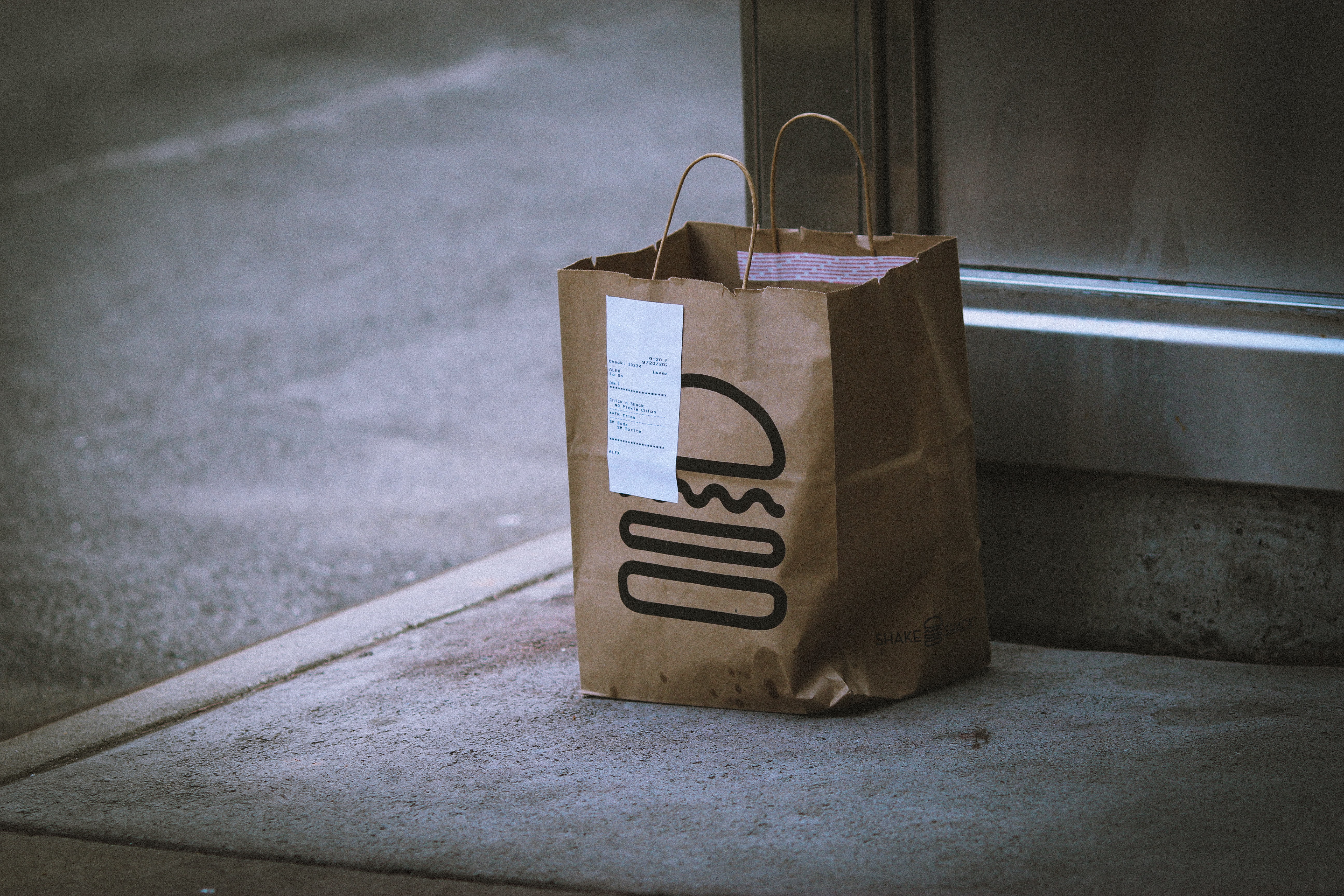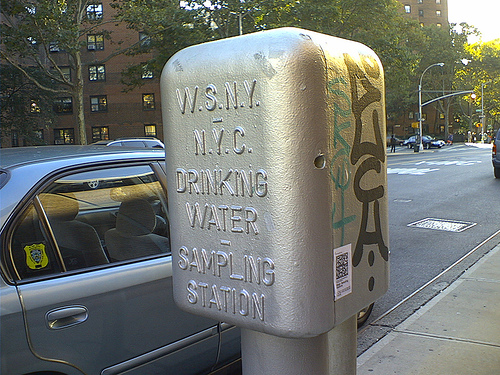
What’s up with those water sampling stations?
You’ve probably walked by them and not even noticed their presence – those silver boxes that look kind of like giant parking meters. Just another slightly innocuous thing you see along the city sidewalks. They fall into the same category as the big green cabinets that have something to do with streetlights and those unsettling canisters of frozen nitrogen (or something) that get all crusted over with ice and are pumping something into a steaming manhole cover. I always think about touching the ice but then don’t.
These water sampling stations seemed like a throwback to me. How quaint. Is it someone’s job to go around and taste the water? Do they spit it out like at a wine tasting or do they swallow – like me at a wine tasting? I bet they don’t even work. They’re something that has no purpose, but costs too much to take away.
Like scaffolding.
Luckily, I know a guy. I reached out to Stanley Greenberg, photographer, and author of the best seller Invisible New York among other books about the infrastructure of New York City.
Check him out here – stanleygreenberg.org

I asked Stanley in my own particular interviewing style, “What up with those things?” and he told me this:
The water sampling stations are exactly that; inside there’s a tap, and a NYC Dept. of Environmental Protection worker opens the door, takes a sample, and brings it back to the DEP lab. They are all over the city. They’re usually in pairs, on either side of a valve. They’ve been around for quite a while. I believe they test for bacteria and other contaminants, such as lead, since the city has to present a water quality report every year (probably a USEPA and/or Clean Water Act requirement). I believe the report is on the DEP website.
(Did you know that city water is tested for contaminants much more often and thoroughly than stupid old, bottled water? Now you do.)
What was that about lead?
While lead is not found in the drinking water, it is found in some pipes in older buildings. When water comes in contact with plumbing that contains lead, the lead can be absorbed into the water. And that might mean your kids could come out with two heads or something.
But, if you’re one of those people who runs the water for a minute before you use its – this is a good idea! Especially if you live in one of those old buildings. Higher concentrations of lead are usually found in water hanging around in a pump in your building for a long period of time, like overnight, or if no one has been home. So run the tap until the water gets cold and you will not be using water that has been sitting in lead pipes all day.
Did you know that the city actually adds small amounts of phosphoric acid to the water?
Sounds scary as fuck, but it’s a natural preservative in many foods and it forms a protective film on household pipes that prevent more lead from getting into the water.
It’s someone’s job to figure that shit out.

I asked Stanley if there had ever been an instance where they had to shut down the water for a particular neighborhood because of some kind of emergency contamination and he told me that has never happened. Our drinking water comes into the city through three main tunnels and the sampling stations are usually clustered around one of the valves near them. There are so many millions of gallons flowing into and around New York City that any significant contamination would take a huge event.
Do we drink the water from the Central Park Reservoir?
It was once used for that after it was built in the 1860s but today it is used as a water source for other bodies of water in the park.
How hard would it be to replace all the water in say, one block, with beer?
What website do you write for again?

Don’t forget to subscribe to our email list to stay updated on all the things TAWK offers! I promise you won’t be disappointed. Let us know what you think! Your feedback is so important to us!
